We value old vineyards planted rather randomly to many different varietals and vines of varying ages that produce very low yields of wonderfully concentrated fruit. However, when the vineyard arrives to a point of next-to-nothing yields, something has to give and the grapevines eventually need to be replanted.
When we purchased Quinta do Tedo in 1992, the vineyards were maintained but overall had a look of abandonment. We needed to replant some vineyards that reached a certain age back then and we did so with a better understanding of what grape varieties grow best in what microclimate of our 14-hectare terraced vineyard estate.
While it tears my heart to tear out charismatic and gnarled old vines, it is once again time to REPLANT a couple of parcels and keep the cycle going.
The past two weeks we have been busy taking out beautifully twisted old vines that average between 90 – 100 years. Our project is to replant 4.3 hectares of vineyard and turn some steep slopes into patamares (dirt terraces) to facilitate our vineyard team and plough horse working them. It will take about 6 - 8 years for the newly planted vines to produce good quality fruit. That is a daunting amount of time and a huge investment. But we need to move forward.
During January and February, when the vines are dormant (sleeping), we will fill in the “bald spots” we’ve been clearing this month with recently grafted vines and a new varietal, Bastardo (also known as Trousseau from France’s northeastern Jura region), we are excited to welcome into our estate’s 24+ varietal vineyard composition. Here is the breakdown:
3,000 vines of Bastardo – for a project to make a lighter red wine, reminiscent of a Pinot Noir, and for elegance in our blended Ports and Douro DOC wines.
7,000 vines of Touriga Franca - for excellent structure.
3,500 vines of Touriga Nacional - Portugal’s noble grape known for its perfume, rich color and structure, and heat and drought resistance.
3,300 vines of Sousão – for acidity and colour.
Our visionary winemaker and viticulturalist, Jorge Alves, believes that these varietals are best indicated for our estate’s Enxertia, Val de Mina and a small part of Val de Savedra parcels which needed replanting. “More resilient and more “terroir-driven”, these varietals express themselves in our soils to create rich and complex wines,” he tells me.
The complexity already apparent in our Ports and wines will be heightened over time with these varietals – deep and warm-coloured Ports and Douro DOC wines with eye-catching highlights, aromas of rock rose, dark fruit, chocolate and wet schist. The so-called “precision” found in all our Ports and Douro DOC wines comes from our grapes’ beautifully balanced acidity and ripeness that generate great roundness and richness in the mouthfeel, persistent length and a focused finish. Mmmmmm….
The soil is being worked 1.2 meters deep with semi-heavy machinery - this will provide the depth needed from the soil to thoroughly absorb Douro’s winter rain showers and retain humidity to help the new vines grows during the usually dry months between May and October 2022.
Our historic socalcos (handmade drywall terraces) will remain intact, an added guaranty to retain moisture in the soil. The replanted parcels will be semi-mechanized by our lightweight tractor, with wider space between the rows at a 3% slope. Carriço, Tedo’s mascot horse, will continue to plough between the vines to aerate the soil without too much pressure so as to not compact the soil (and thus decrease water absorption) in the winter.
Our choice of native and new grape varieties and replanting strategy are representative of the balance of tradition and modern applications that we have undertaken at Quinta do Tedo for decades!

















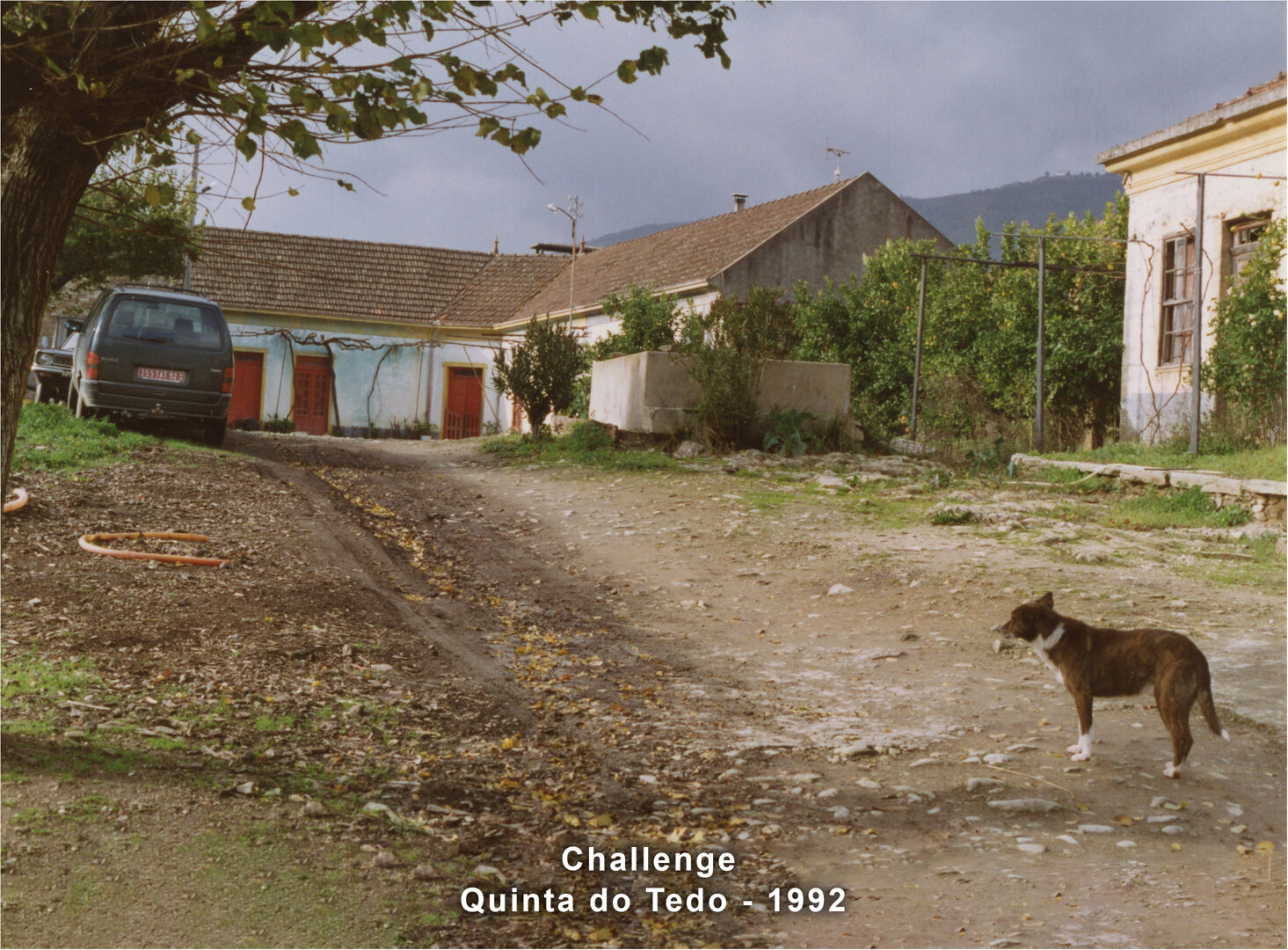
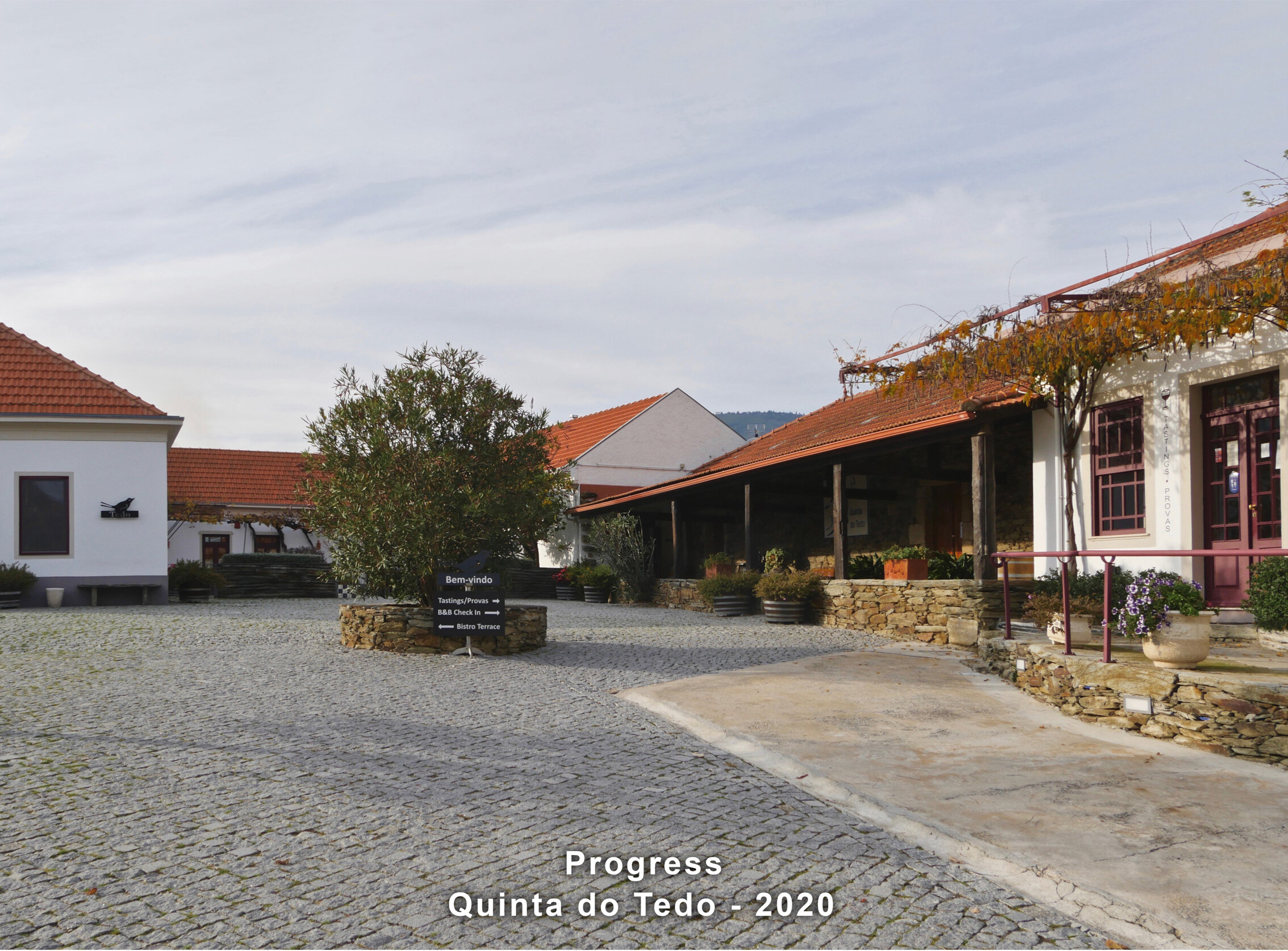



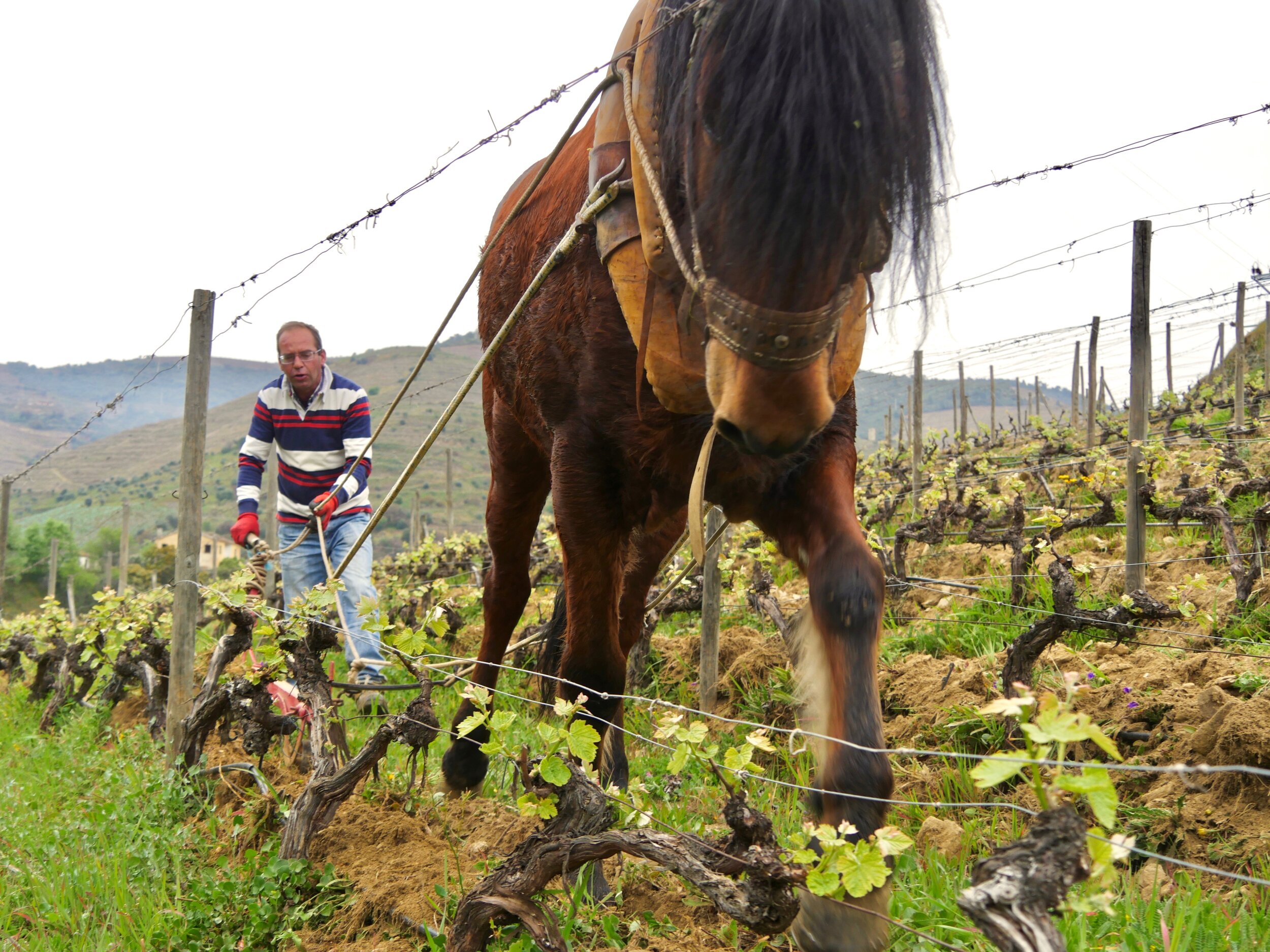
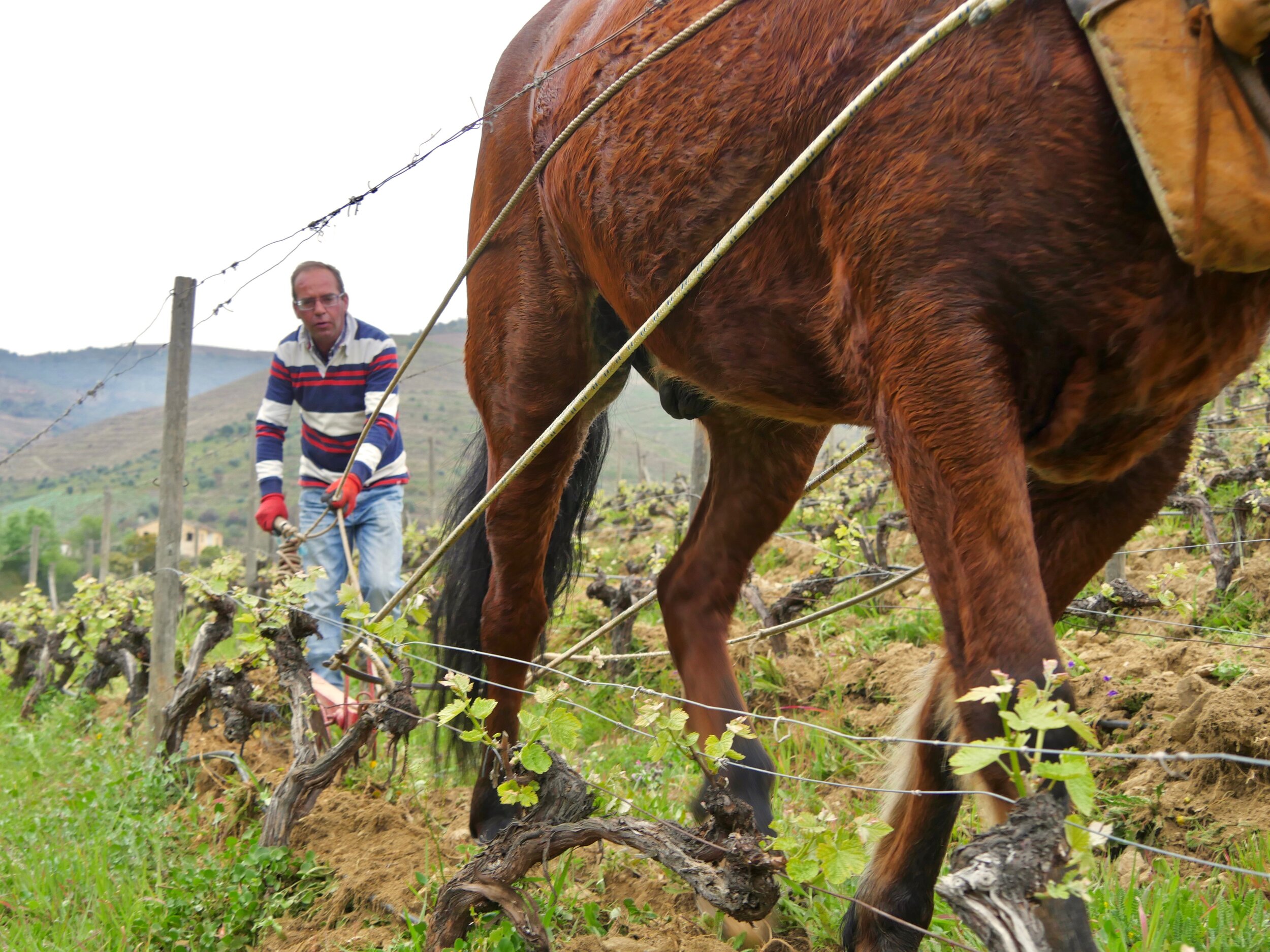
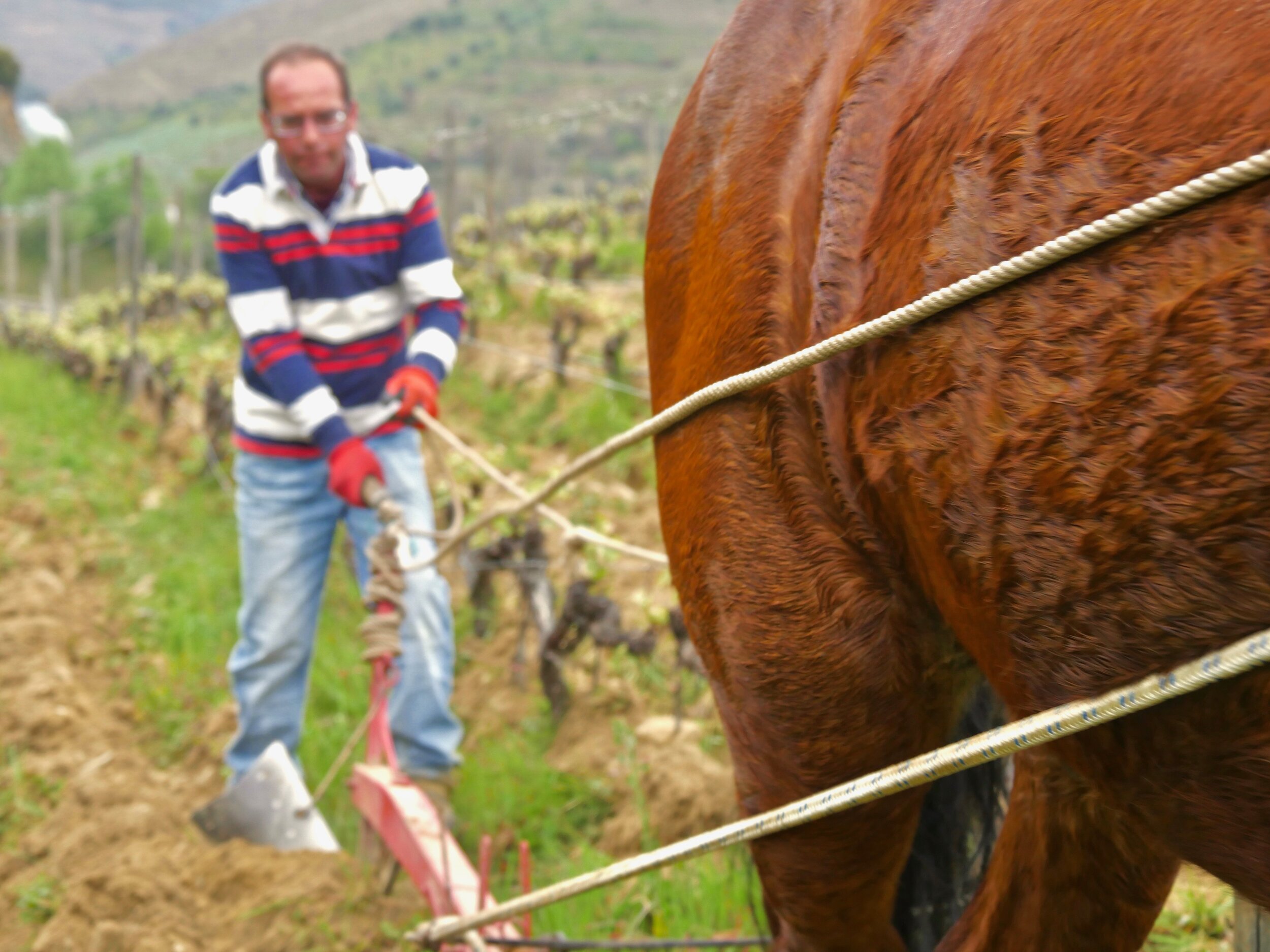


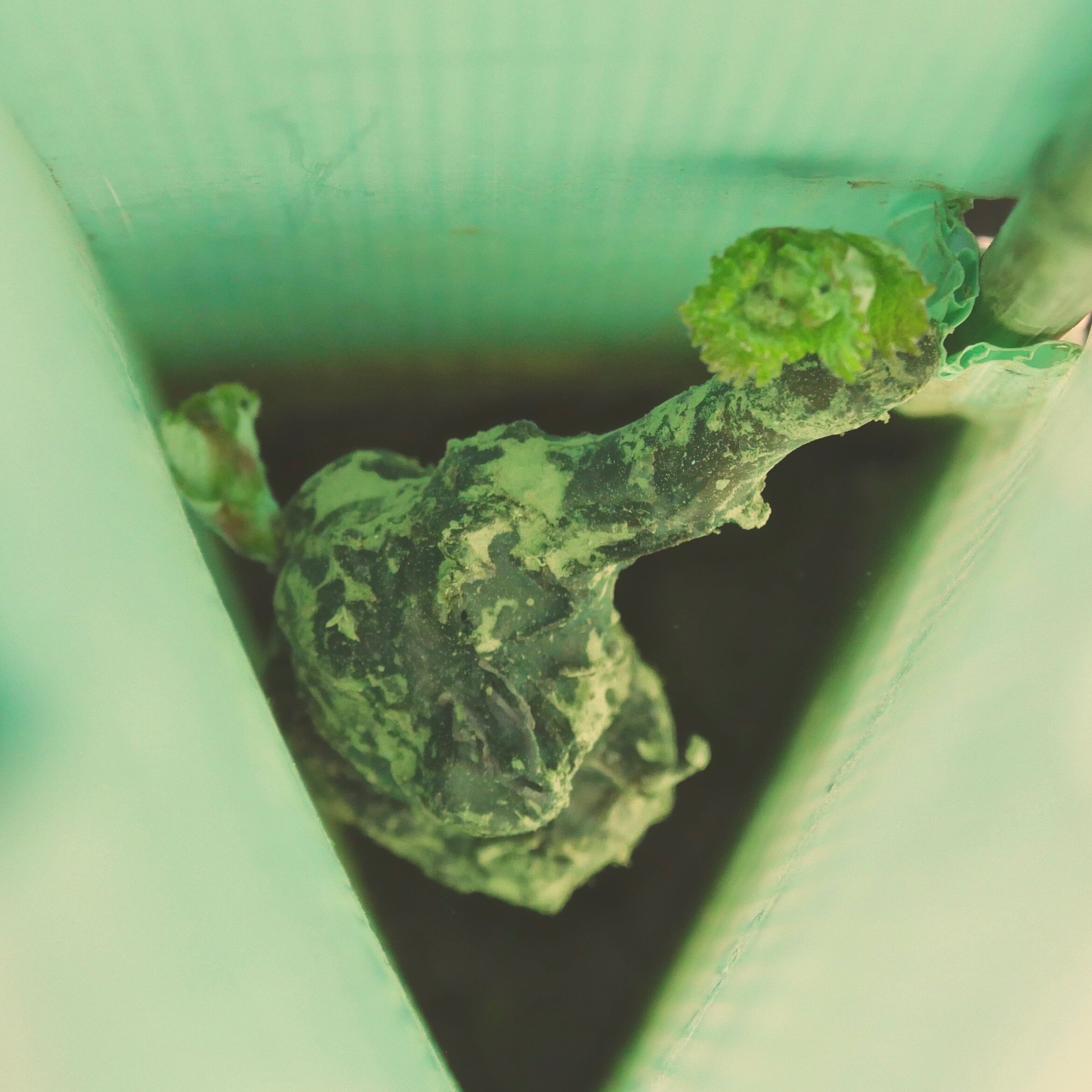

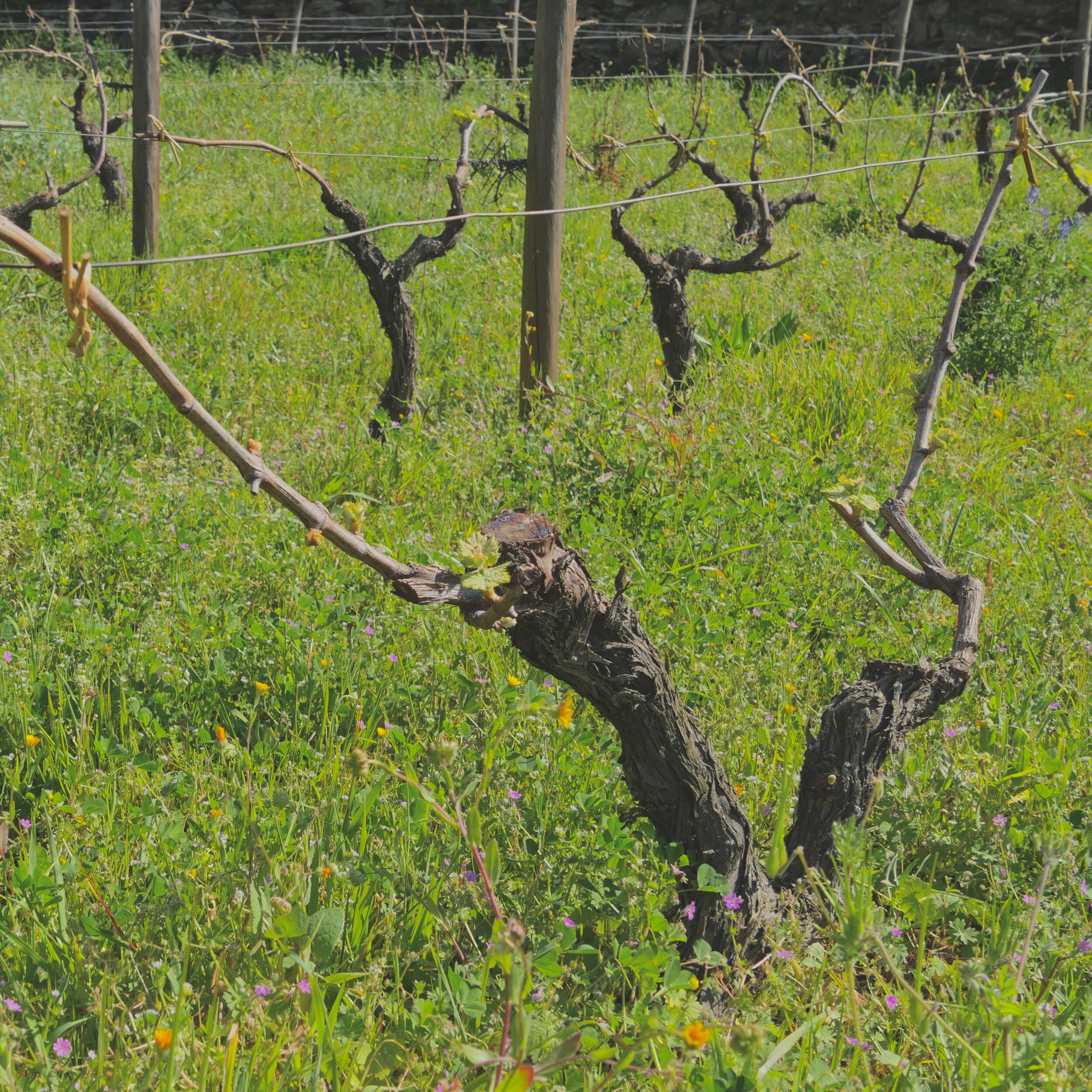

 Our established terraced vineyards are planted very closely together – 1.6 meters between rows, 1.6 meters trellised in height and 1.1 to 1.2 meters between each vine. We do not want the vine’s vegetation to be vigorous and to overlap from one vine to the next. We maximize the number of vines per hectare to create competition between the vines, to actually stress the vines to produce less but more concentrated juice (less is better!). This high density plantation is more expensive to plant and to maintain because there are more vines, more rows of wire support, more labor for pruning, etc. Since we do not use heavy machinery in our vineyards that would destroy the beautiful stone wall terraces (we have our faithful horse Tedo to do the plowing), we replant by hand, and even more, only the missing plant and not the whole row.
Our established terraced vineyards are planted very closely together – 1.6 meters between rows, 1.6 meters trellised in height and 1.1 to 1.2 meters between each vine. We do not want the vine’s vegetation to be vigorous and to overlap from one vine to the next. We maximize the number of vines per hectare to create competition between the vines, to actually stress the vines to produce less but more concentrated juice (less is better!). This high density plantation is more expensive to plant and to maintain because there are more vines, more rows of wire support, more labor for pruning, etc. Since we do not use heavy machinery in our vineyards that would destroy the beautiful stone wall terraces (we have our faithful horse Tedo to do the plowing), we replant by hand, and even more, only the missing plant and not the whole row.